For years we have watched the flower bed, and I use that term loosely, lining the front of our house get more and more overgrown with trailing vinca and nutgrass, the evergreen bushes at each end covering more and more area, and the knockout roses getting more and more out of control. The evergreens have been trimmed from time to time, I have tried to weed and clean despite the root-bound dirt. So, the time had finally come to do something about it. I had grown weary of trying to keep it under control and was ready for a new look and no maintenance. Well, everything requires maintenance to some degree, but I was ready for little or none. A serious case of xeriscape was the answer I was looking for.
Xeriscape comes from the Greek prefix xero, meaning dry, but even though the Greek prefix is spelled with an O, and xeriscape can be said to use zero water, it is not spelled or pronounced zerOscape! It is a style of landscaping that depends on the use of drought-tolerant plants that require little water and maintenance. Plants native to an area are good choices for success with this method because they are acclimatized to that geographic area, weather and soil. But some non-native drought-tolerant plants can be used as well.
Here are some before pictures of the front of our house:
And here are some after pictures of the front of the house.
In the interest of zero maintenance, I purposely used only three famously cold-hardy plants, Echinocereus coccineus, Agave havardiana, and Agave Neomexicana. They are small now, but as they grow they will make a statement and fill in what probably looks like empty space to most of you. But that was the idea! The clump of coccineus is making buds for bright orangey-red flowers right now and will provide a bright spot each spring.
The Agave havardiana will get quite large and bloom in about thirty-plus years. I doubt I will be around when that happens! But the plant will be really impressive.
The Agave neomexicana will grow to be smaller than the havardiana and will bloom in about fifteen years; that one I might see.
It is inevitable that over time some seeds will blow in and sprout and will need to be pulled up as they appear. That will be easy if done in a timely manner before the weeds get big and try to take over the bed. Any yard or flower bed requires some maintenance, but this is precious little compared to the way it was before. The evergreen junipers, I think they are, at each end of the bed were pruned back severely, as you can see when comparing the pictures, and they will grow to be pruned again, too, but you can see what a difference pruning them made in the look of the bed.
Top dressing is important to finish the project. Crushed rock, decomposed granite, river rock, and gravel of various sizes are good choices for the cover. I chose what our landscape contractor, Bryce Thomason at Advanced Irrigation and Design, calls path mix. Landscape cloth was put down and covered with the path mix thick enough to stabilize the cloth and inhibit anything green from popping up.
Xeriscaping can also be done along with drought-tolerant perennial foliage plants that add flowers and more color to the bed, but that also adds more maintenance, clean-up, and perhaps occasional watering. If that is the look you might prefer, I would suggest you go to the link I have included at the bottom of the story. That website goes into all kinds of detail on other xeriscape styles and lists plants that could be used.
If you want a yard that is cost efficient, reduces your water bill, improves the biodiversity of your yard, and is definitely low maintenance if done correctly, this is a good way to go.
And you will have a yard with an eye-catching, special look all its own.
I’m happy.
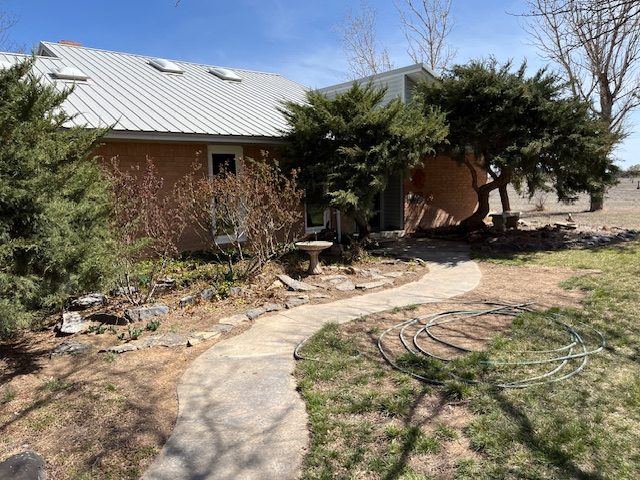
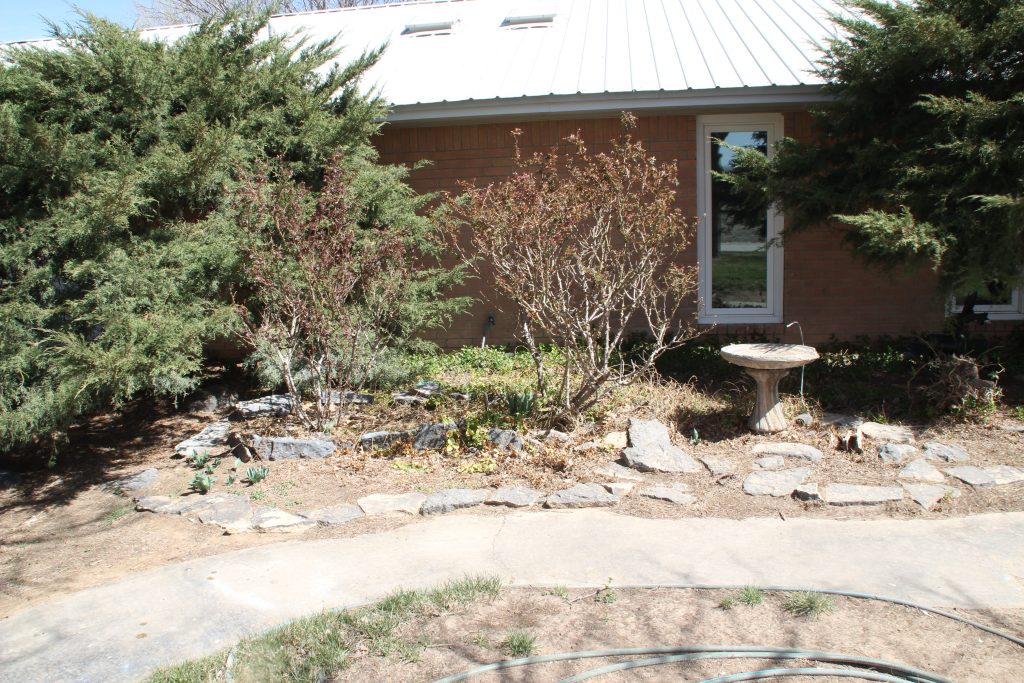
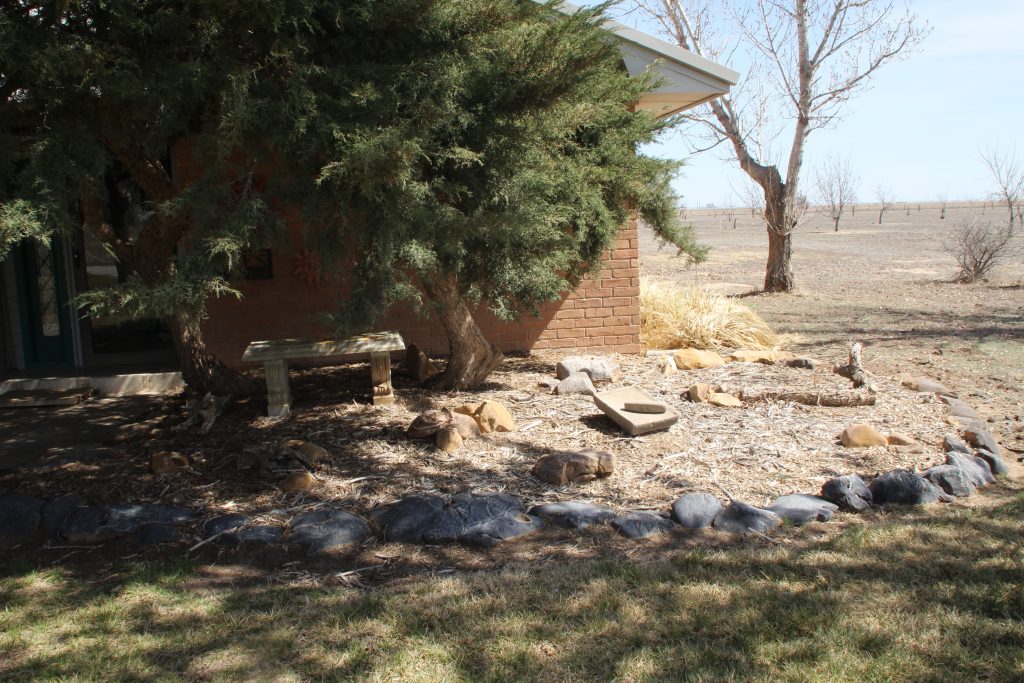
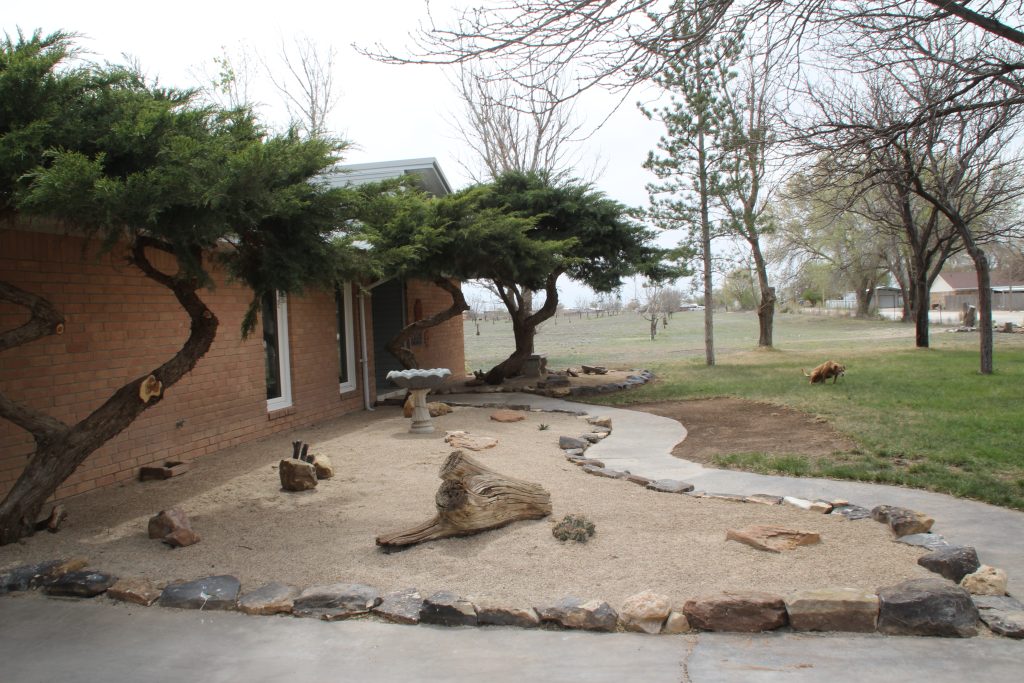
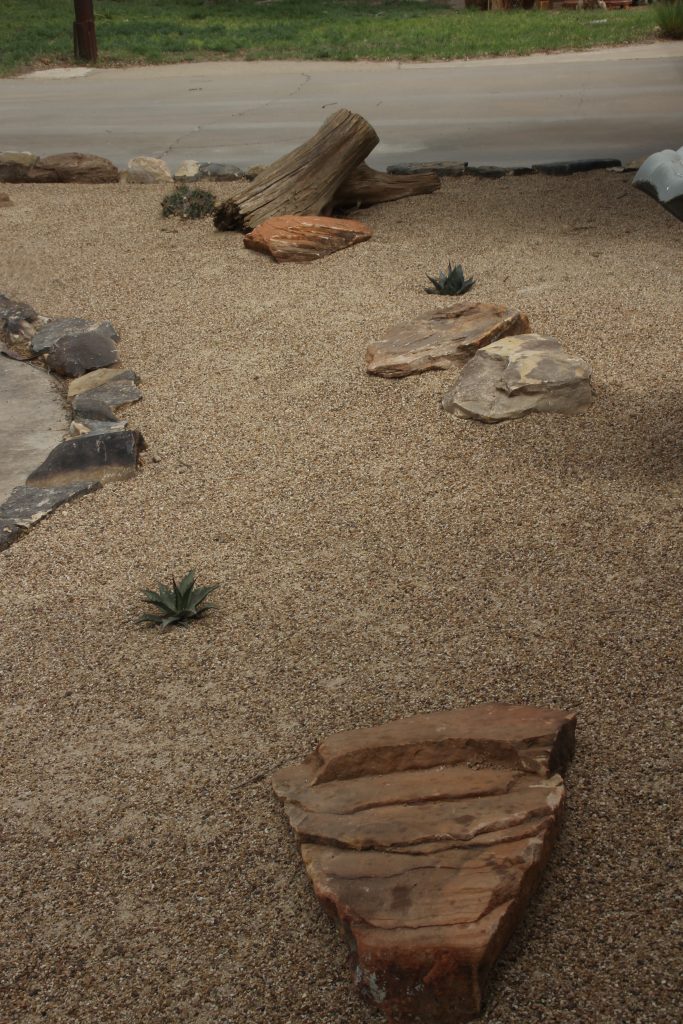
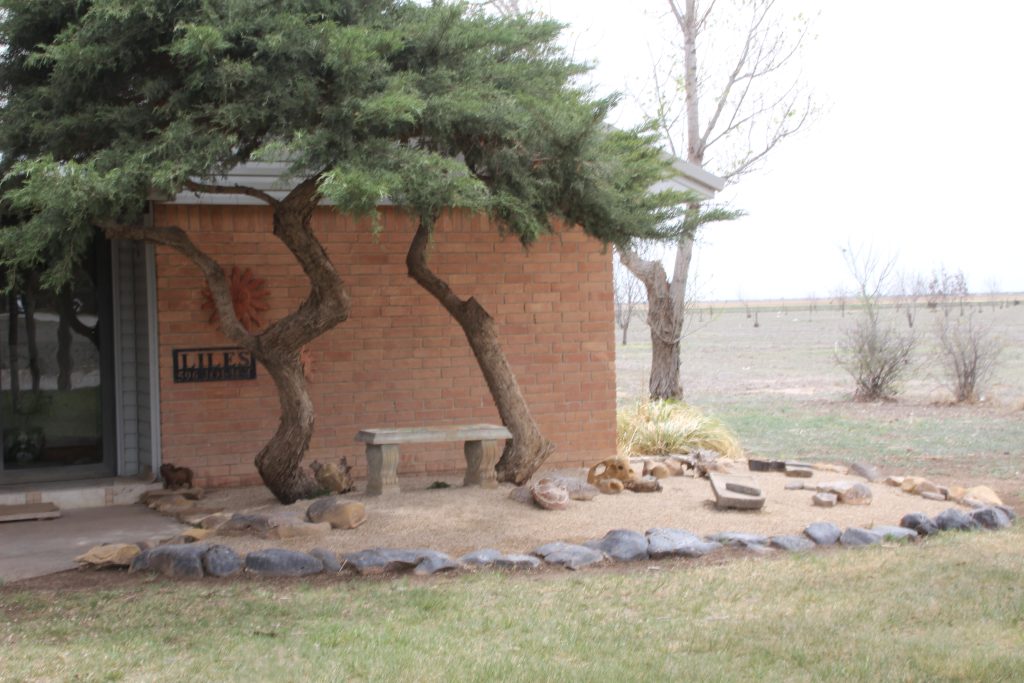
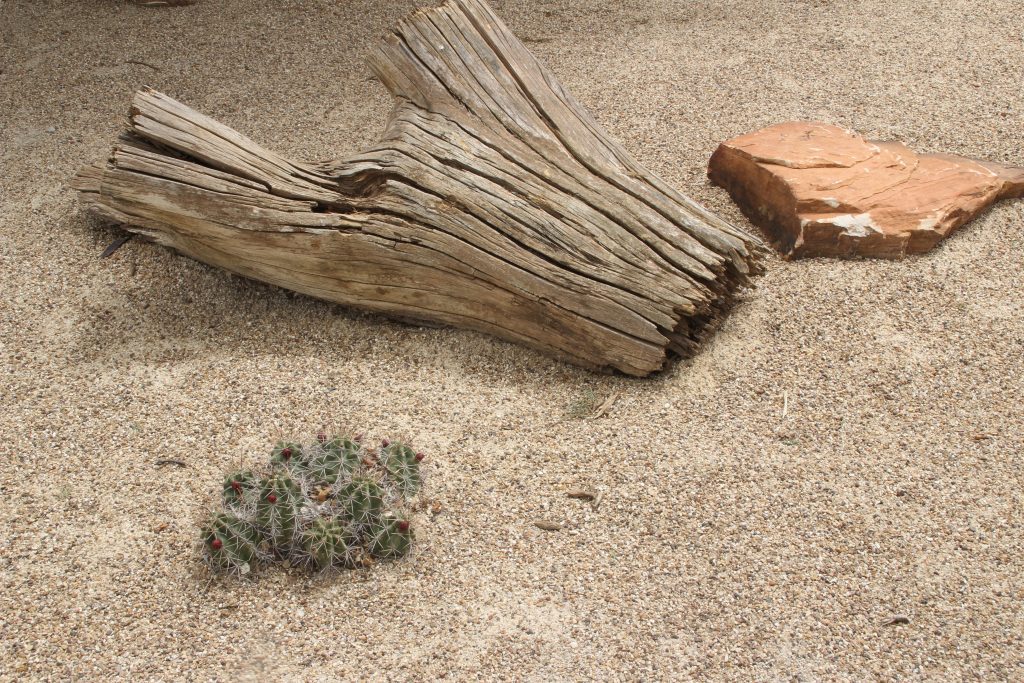
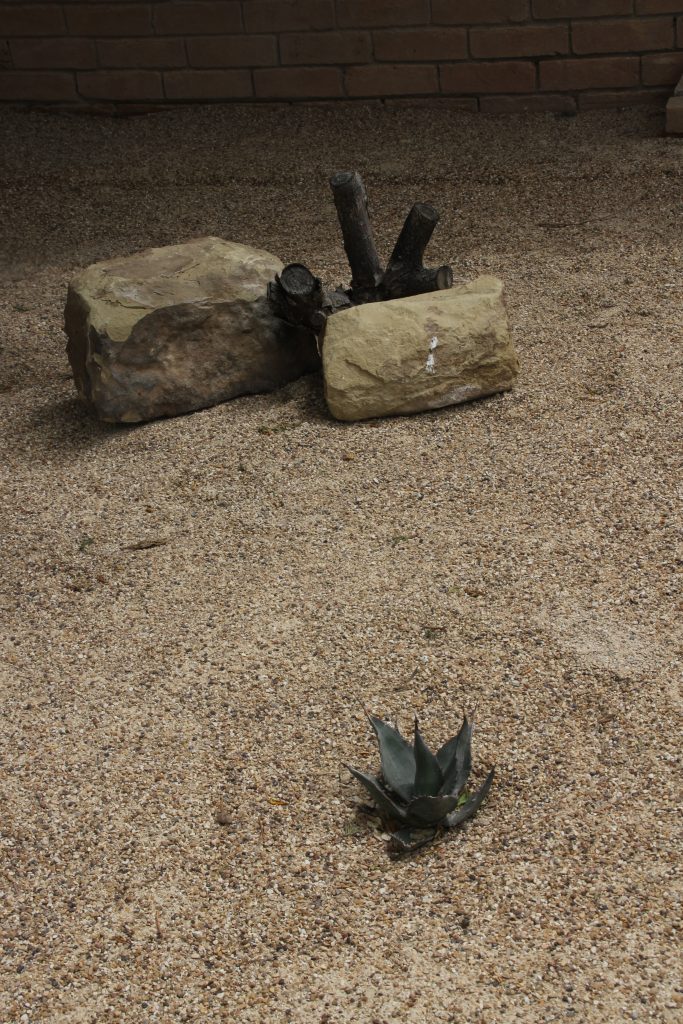
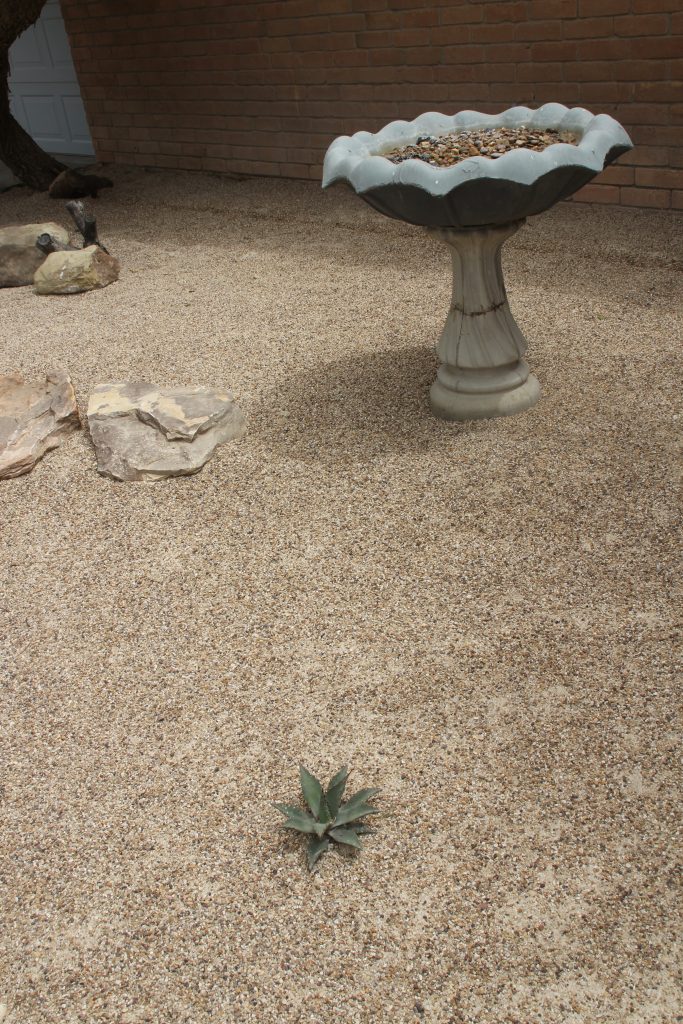
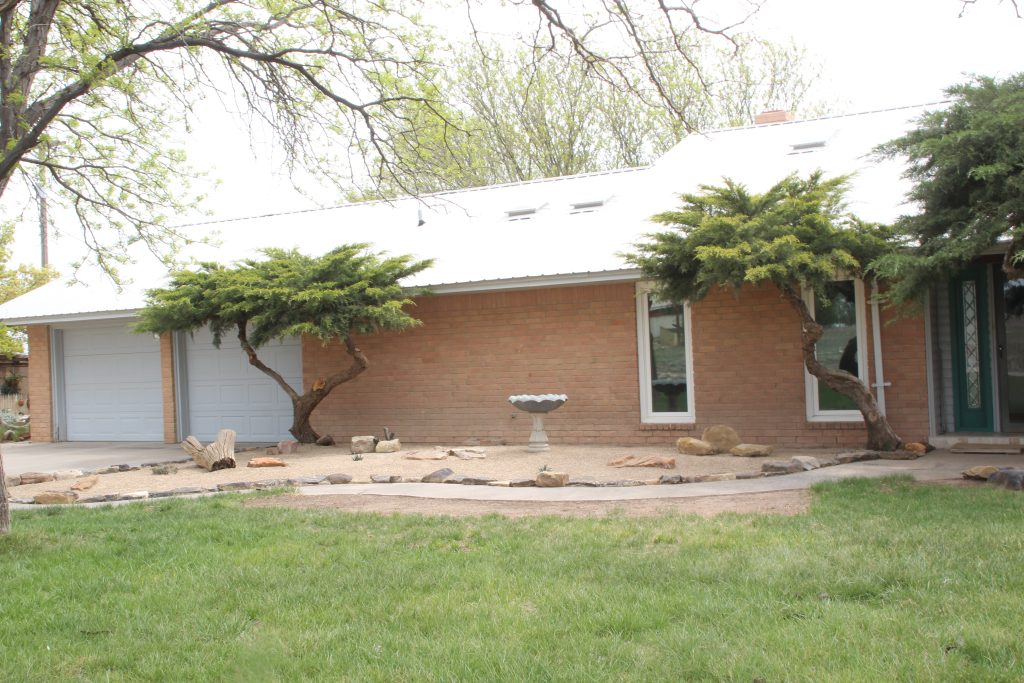
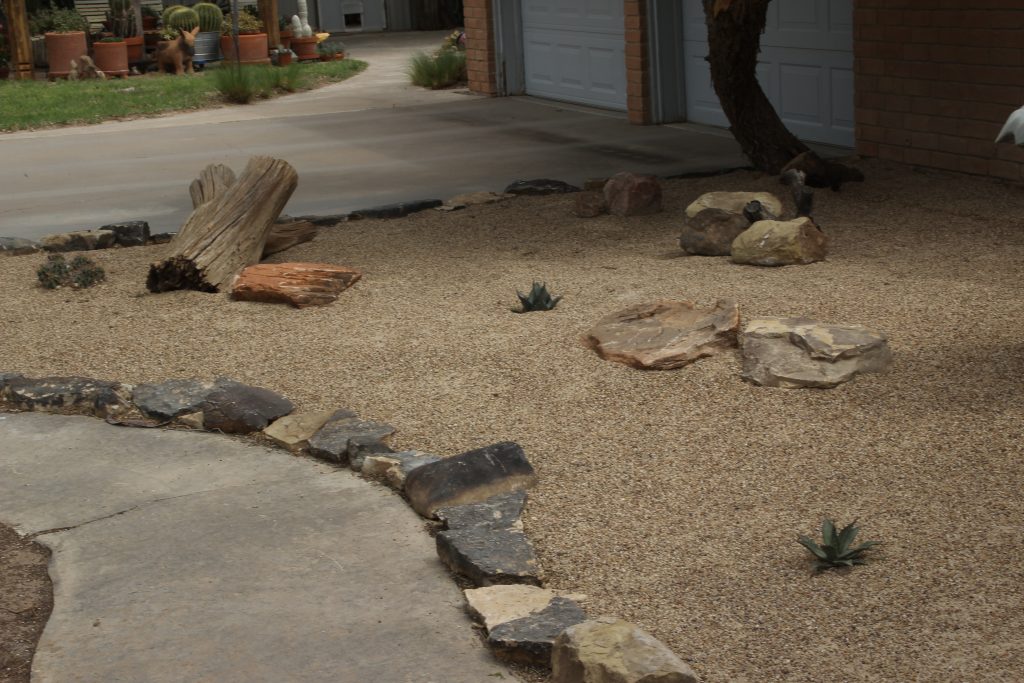
Looks good! I’m doing similar efforts down here in Medina County. 2 years of drought & Stage 4 water restrictions left my beds looking sad and you know how the oak leaves accumulate! I’m thankful to have your expertise to encourage me.
I am really enjoying my new yard! Hope it goes well for you, too.
Thanks for the new addition to my vocabulary. The change that you made is impressive. Well done!
Thanks!
Really nice as usual.
Thanks!
Love it! I see now why you didn’t include your home as an example in your later post on xeriscaping–you’d already covered it.